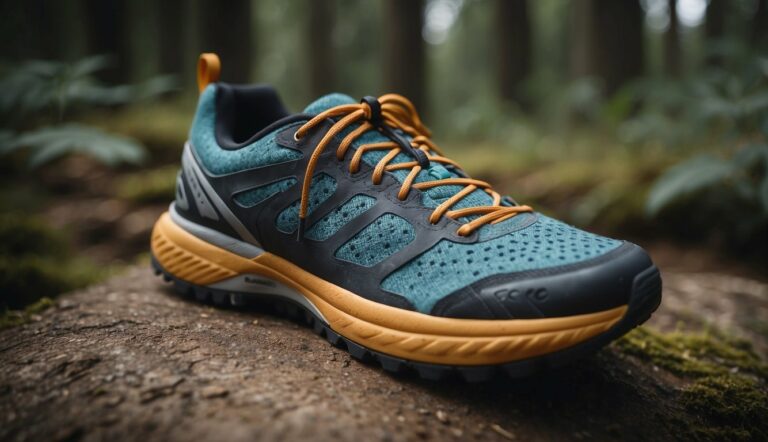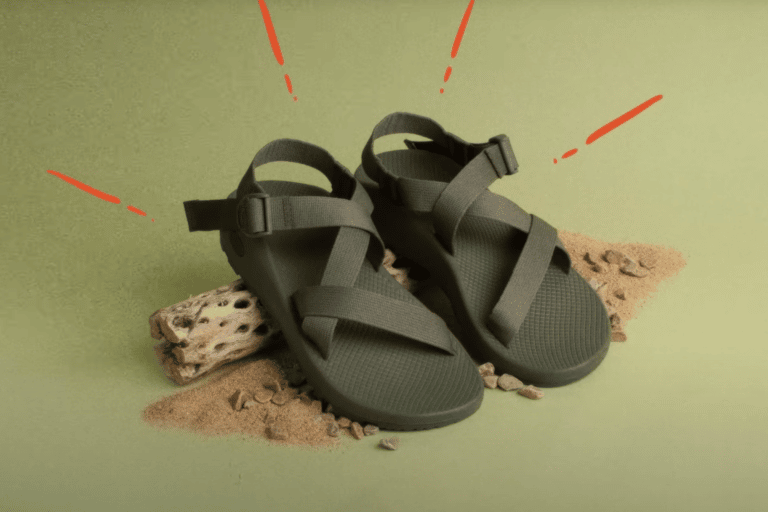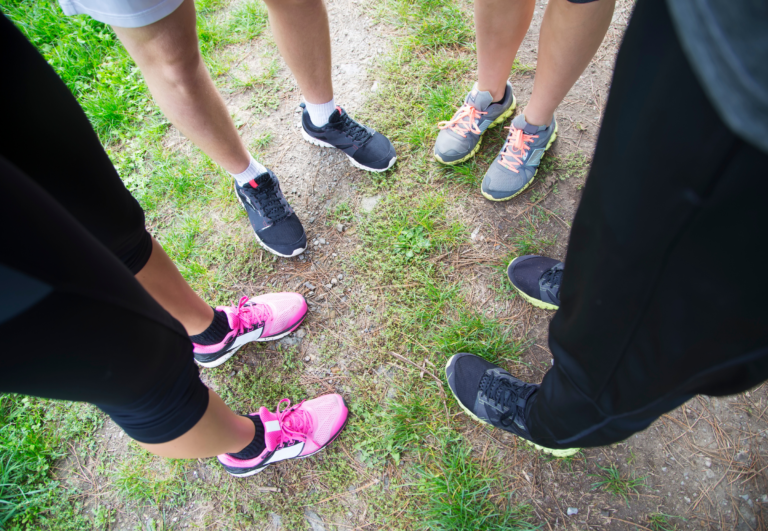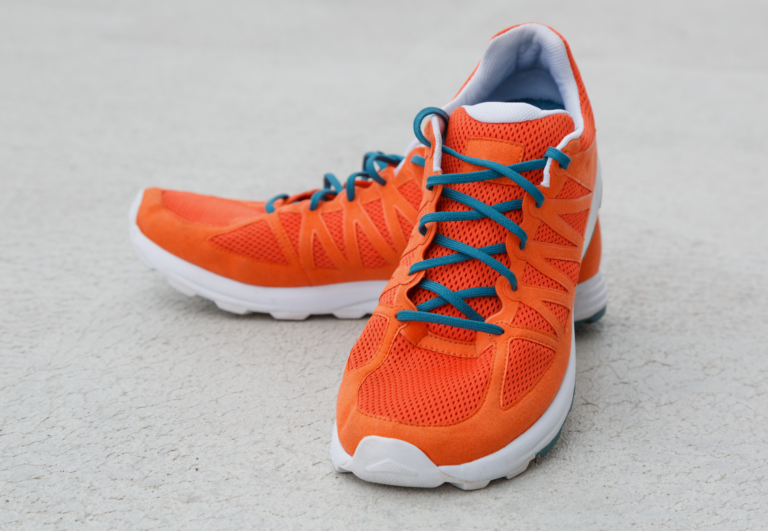Are Hybrid Shoes Good for Both Trail and Road Running? Unpacking Dual-Purpose Footwear Benefits
Choosing the right footwear for running often depends on the terrain. For runners who transition between asphalt roads and rugged trails, hybrid shoes provide versatility without the need for multiple pairs. My practical experience, alongside industry developments, indicates that these hybrid models integrate features suitable for both environments: durable outsoles with enough traction for trails and cushioned midsoles for road comfort.
As a UESCA certified running coach, I frequently recommend hybrid running shoes to athletes who enjoy both trail and urban runs. The shoes are constructed to offer a balanced ride, with lugs that provide grip off-road while not being too aggressive for the pavement. This makes them a convenient choice for those who don’t want to commit to a specialized shoe for each setting.
Hybrid shoes stand out due to their adaptability. The blend of grippy outsoles and supportive cushioning means whether you’re tackling a steep forest hill or pacing through the city, your footwear won’t compromise your performance. As an expert and an avid user, I see hybrid shoes as a smart investment for runners seeking practicality and performance across different terrains.
Are Hybrid Shoes Good for Both Trail and Road Running?
Hybrid running shoes are designed to bridge the gap between road running and trail running, offering versatility for runners who transition between different types of terrain. They typically feature a balance of cushioning and support for the hard surfaces of the road, while also providing additional traction and durability for the variable conditions of trails.
The outsole of a hybrid shoe often has lugs that are less aggressive than those found on dedicated trail shoes, which allows for a smoother ride on pavement while still offering grip on loose or uneven surfaces. The construction is usually more robust than a standard road shoe to withstand the demands of trail running, such as rocks, roots, and mud.
For example, the Nike Pegasus Trail 4 is lauded for its all-around comfort and ability to handle both road and trail surfaces. Similarly, the Hoka Challenger 7 is known for its cushioning, making it a solid choice for runners looking for a shoe that can handle mixed terrains.
While hybrid shoes are a good choice for many, they may not be the best option for extremely technical trails or for runners who exclusively run on the road. Dedicated trail shoes will offer more protection and grip for technical terrain, and road shoes will typically be lighter and more responsive for pavement running. However, for those who frequently run on both surfaces, hybrid shoes can be a convenient and comfortable option.
What Are Hybrid Running Shoes?
Hybrid running shoes, also known as road-to-trail shoes, are designed to bridge the gap between smooth pavement and rugged terrain. Featuring qualities optimized for both environments, they offer versatility for runners who enjoy diverse landscapes.
Defining Hybrid Footwear
A hybrid shoe combines the cushioning and smooth ride of a road running shoe with the toughness and grip of a trail running shoe. The outsoles of hybrid shoes often boast moderate lugs that provide traction on trails, while maintaining a level of comfort and stability on roads.
Brand Innovations and Models
Several brands have recognized the demand for such adaptable footwear. For instance, Hoka’s Challenger ATR 7 is touted for its high stack height and moderate heel-to-toe drop, catering to comfort and performance across different terrains.
Similarly, the Nike Pegasus Trail 4 GORE-TEX offers waterproof capabilities while keeping intact the beloved aspects of their classic road shoe. Meanwhile, Altra, known for their foot-shaped toe box and balanced cushioning, has also thrown its hat in the ring with models that handle varying surfaces adeptly.
Key Features of Hybrid Shoes
Hybrid shoes combine the best of both worlds, perfect for runners who transition from asphalt to trails. They cater to the demand for comfort on the road and stability on rugged terrain. Let’s explore the key components that make up a successful hybrid shoe.
Sole and Traction
The sole of a hybrid shoe is a balancing act between being adaptive on various surfaces and durable for long-term use. A Vibram rubber outsole is often used for its resilience and grip. Lugs, which range in size, are milder than those on dedicated trail shoes to prevent discomfort on harder surfaces, but still provide enough traction for most trails.
- Rubber Outsole: Vibram or equivalent high-traction rubber
- Lug Size: Moderate, versatile for both surfaces
- Traction: Balanced for grip on loose material without being obstructive on roads
Cushioning and Midsole
The midsole of hybrid shoes typically features a foam midsole that offers a cushioning system supportive enough for the road but responsive for trail surfaces. A well-designed hybrid shoe often has a modest heel-to-toe drop, maintaining a natural foot position adaptable to different terrains.
- Foam Midsole: EVA or similar foam for comfort and support
- Cushioning: Adequate for road impacts, adaptable for trails
- Heel-to-Toe Drop: Moderate, catering to varied terrains
Upper Construction
The upper must protect the foot and maintain comfort regardless of the terrain. It should be durable to withstand the wear-and-tear of trails, yet breathable to prevent overheating on the road. The construction often involves reinforced mesh or similar materials that offer flexibility without sacrificing integrity or comfort.
- Material: Durable mesh or equivalent
- Protection: Reinforced areas to withstand trail debris
- Breathability: Sufficient for maintaining comfort during road runs
Pros and Cons of Hybrid Shoes
As a UESCA certified running coach with hands-on experience, I will highlight the balance hybrid shoes strike for running on diverse terrains, noting their versatility along with performance limitations.
Advantages of Hybrid Shoes
Pros:
- Comfort & Fit: Hybrid shoes typically offer a comfortable fit that adapts well to different surfaces. Whether it’s a road’s smooth asphalt or a trail’s rough patch, they provide enough support to handle both.
- Weight & Breathability: Many models are designed to be lightweight and highly breathable. This can be a boon for long-distance runners who value reduced weight and increased airflow.
- Protection & Style: Hybrid shoes often feature a protective design without compromising on style, combining rugged looks with functionality.
Pros Table
| Feature | Advantage |
|---|---|
| Comfort | Adapts to varied terrain |
| Weight | Lightweight for less fatigue |
| Breathability | Promotes airflow to keep feet cool |
| Protection | Defends against trail hazards |
| Style | Aesthetically versatile for both trail and road |
Potential Drawbacks
Cons:
- Durability: While built to handle different environments, hybrids might wear quicker on rough trails compared to dedicated trail shoes.
- Waterproofing: They may not offer the same level of waterproofing as specialized trail shoes, which might be an issue in wet conditions.
- Fit: Although designed to be roomy for comfort, they might not be as snug as some runners prefer, potentially affecting stability.
Cons Table
| Feature | Drawback |
|---|---|
| Durability | May erode faster on harsh terrain |
| Waterproofing | May lack complete protection in wet settings |
| Fit | Could be too spacious for some foot types |
Performance on Different Terrains
In assessing the efficacy of hybrid shoes across varying surfaces, my experience dictates that a shoe’s sole composition and midsole cushioning are paramount.
Hybrid shoes, specifically the best road to trail running shoes, aim to cater to diverse terrains, toeing the line between cushioning for hard pavement and traction for unwieldy trails.
Trail Versatility
When it comes to trails, from a loose rocky path to a muddy forest floor, a dependable hybrid shoe offers formidable grip. The outsole should have lugs with enough depth to penetrate terrain irregularities, ensuring stability on a trailhead or when navigating through mud.
Moreover, a shoe’s lateral and medial sides need to bolster support for the uneven nature of trail surfaces. Shoes providing optimal traction while maintaining flexibility are the key for trail versatility.
- Lug Depth: Preferably 4-6 mm for sufficient traction
- Lateral Support: Essential for uneven trail surfaces
Road Responsiveness
On the road, a hybrid shoe should guarantee a smooth transition with each stride. The road demands a flatter outsole for greater surface contact, translating to better responsiveness on pavement.
The stack height or the amount of material between your foot and the road should also be considered; not too high to impair stability, not too low to forfeit cushioning. The forefoot cushioning needs to attenuate the repetitive impact of the pavement and provide a bouncy toe-off.
- Stack Height: Balanced to ensure cushioning without loss of road feel
- Outsole Flatness: Ensures efficient energy return on hard surfaces
In my professional opinion, a well-designed hybrid shoe can indeed serve runners well on both trails and roads. However, the individual runner’s preference and the specific conditions of their most frequented terrains will ultimately guide the best choice in hybrid footwear.
Choosing the Right Hybrid Shoe

When selecting a hybrid shoe, the goal is to find footwear that offers seamless transition between road and trail, providing comfort, stability, and durability. My experience as a UESCA certified running coach has shown that the right hybrid shoe can make a significant difference in a runner’s experience.
Factors to Consider
- Cushioning: A shoe with adequate cushioning is vital for absorbing the impact on hard surfaces without compromising the feel of the trail.
- Fit: Ensure the shoe fits snugly without hindering foot movement. It should allow for natural foot expansion during long runs.
- Support: Look for a shoe that offers stability and support without being overly rigid, allowing for agility on uneven terrain.
- Performance: The shoe should have responsive cushioning and traction suitable for the ruggedness of trails and the hardness of roads.
- Design: Hybrids usually provide a balance, featuring outsoles that grip well on loose surfaces but won’t feel awkward on asphalt.
- Zero-Drop: Some runners prefer a zero-drop shoe for a more natural foot position, yet it’s essential to transition gradually to avoid injury.
Below is a simplified chart that captures the essence of these factors:
| Factor | Why It Matters |
|---|---|
| Cushioning | Protects against impact. |
| Fit | Prevents blisters; improves comfort. |
| Support | Reduces overpronation risks. |
| Performance | Enhances traction and responsiveness. |
| Design | Balances between grippy and smooth. |
| Zero-Drop | Can promote a natural stride. |
Popular Hybrid Shoe Models
Here are a few popular models that I have found to be effective for both road and trail running:
- Hoka Challenger ATR 7: These shoes provide cushioned comfort and are versatile on different terrains.
- Nike Pegasus Trail 4: Known for its comfort and Gore-Tex waterproof version, suitable for wet conditions.
- Altra Outroad: Earning a reputation for its budget-friendliness and zero-drop design.
Notable Features for Each Model:
| Model | Notable Features |
|---|---|
| Hoka Challenger ATR 7 | Ample cushioning; versatile traction. |
| Nike Pegasus Trail 4 | Comfortable fit; available in waterproof. |
| Altra Outroad | Budget-friendly; zero-drop for natural stride. |
Choosing a shoe is often personal; what works for one runner may not suit another. It is advisable to try on several options and consider where most of your running will take place. A shoe that feels equally comfortable on the road as on the trail without causing any discomfort is the ideal choice.
Caring for Your Hybrid Shoes
Hybrid running shoes, adept for both trail and road, require careful maintenance to maximize their lifespan and performance. I’ll walk you through how to properly care for these versatile shoes to ensure they remain in top condition.
Maintenance and Durability
For maintenance and durability, I recommend regular cleaning after each use, especially if the shoes have been used on trails. Dirt and debris can deteriorate the materials, so:
- Remove excess dirt: Knock the soles together outdoors and use a soft brush to remove dirt from the uppers and outsole.
- Wash carefully: If washing is necessary, do so with mild soap and cold water, avoiding harsh chemicals that can damage the shoe’s materials.
- Dry properly: Never put them in a dryer; air-dry away from direct heat sources.
Pay attention to the lacing system and the tongue of the shoes. The laces should be checked for wear and replaced if frayed. Also, ensure the tongue is clean and positioned correctly to prevent discomfort.
Materials like the rubber outsole and the rand (the strip of rubber that wraps around the shoe) should be inspected for wear. Small cuts or abrasions can turn into larger issues if not treated. Applying a protective treatment to the uppers can help the footwear resist water and stains.
When to Replace Your Shoes
Knowing when to replace your hybrid shoes is crucial for avoiding injuries. Here’s a concise guide:
- Monitor mileage: Hybrids generally last between 300-500 miles. Keep track of mileage to assess shoe condition.
- Check for wear: Examine the sole for significant wear. If the tread or cushioning systems are worn down, it’s time for a new pair.
- Listen to your body: Don’t ignore aches or pains that might indicate your shoes are no longer providing adequate support or shock absorption.
As a UESCA certified running coach, I advise against waiting for clear breakdown before replacing your shoes, as this could lead to discomfort and injury. Regular inspections will keep your sports gear in great shape and your runs enjoyable regardless of the terrain.






